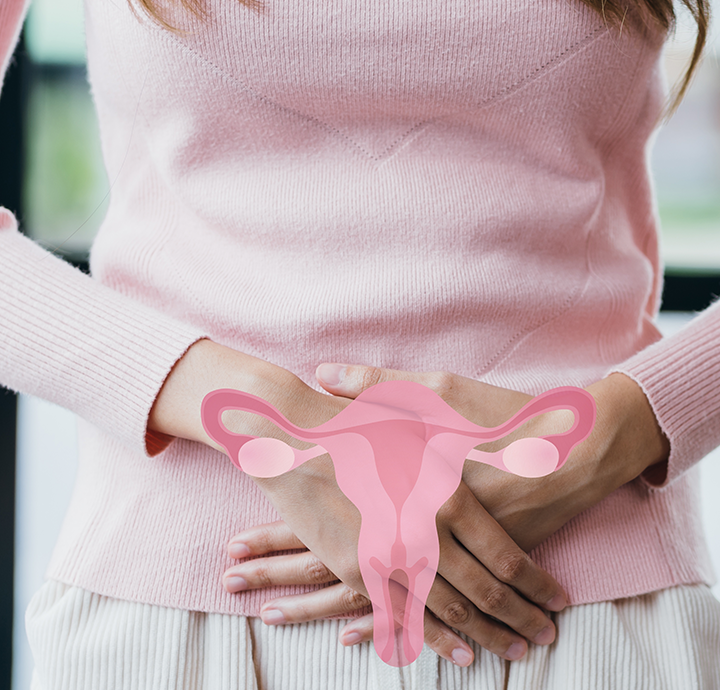
Hydrosalpinx is a term related to the female reproductive system and refers to the accumulation of fluid within the fallopian tubes.
The term "hydro" means water, while "salpinx" refers to the fallopian tubes. These tubes are structures that connect the uterus to the ovaries and play a crucial role in transporting a fertilized egg to the uterus. If not treated, hydrosalpinx can disrupt the normal functioning of the tubes due to the accumulation of fluid. It can also make it difficult for a fertilized egg to reach the uterus, leading to issues with infertility. This condition often arises from causes like infections and endometriosis.
Hydrosalpinx can lead to various complications if left untreated. The accumulation of fluid within the fallopian tubes can hinder their normal function. Additionally, it can make it challenging for a fertilized egg to travel to the uterus and may contribute to infertility issues. This condition is typically associated with factors such as infections and endometriosis.
Hydrosalpinx might not always present obvious symptoms and is often detected incidentally during medical examinations. However, some women may experience certain signs. One common symptom is abdominal pain, which manifests as discomfort or aching in the abdominal or pelvic region. This discomfort is often felt in the lower abdomen and can become chronic in advanced cases.
The presence of fluid within the tubes can create an environment conducive to bacterial growth, increasing the risk of pelvic infections. This can lead to symptoms like fever, pain, and vaginal discharge. The pressure on tissues or organs near the fallopian tubes might also result in irregularities in the menstrual cycle. A diagnosis can be made by a specialist using methods like a uterine X-ray (hysterosalpingogram) along with the patient's symptoms.
There are various factors that can contribute to the development of hydrosalpinx. The most common cause is infection, particularly in the pelvic region. Sexually transmitted diseases (such as chlamydia or gonorrhea), when present in the pelvic area, can disrupt the normal flow within the fallopian tubes, leading to inflammation and fluid accumulation. Some of the most prevalent factors include:
Another significant cause is endometriosis, a condition where the inner lining of the uterus grows outside its normal location. If this growth occurs near the fallopian tubes, it can affect their structure and lead to the development of hydrosalpinx. Additionally, improper healing or scar tissue formation from previous uterine or tubal surgeries can also adversely affect normal functioning.
Modern medicine employs specific tests to diagnose hydrosalpinx. Ultrasound is an imaging method used to visualize pelvic organs. Transvaginal ultrasound can provide a more detailed examination of pelvic structures and help identify fluid accumulation or structural issues within the tubes.
Additionally, Hysterosalpingography involves injecting contrast material into the uterus to obtain X-ray images of the uterus and tubes. This procedure can provide a more precise visualization of tube conditions, blockages, or fluid accumulation. Magnetic Resonance Imaging (MRI), another classical method, employs magnetic fields and radio waves to generate detailed images. This approach can offer a more comprehensive examination of the area's structures and detect abnormalities within the tubes.
The treatment of hydrosalpinx can vary depending on the patient's condition, symptoms, and underlying causes. With the right diagnosis and appropriate treatment, the chances of pregnancy can significantly improve. If the cause of the condition is blockages, adhesions, or other physical issues within the tubes, surgical intervention might be considered. Laparoscopic surgery, also known as hydrosalpinx surgery, is often used to address problems at the site by making small incisions. This method can improve tube structure or open blockages.
Depending on the severity of the condition and the state of the tubes, complete removal of the tubes (Salpingectomy) might be necessary. This is preferred when restoring normal function in the area isn't feasible. It is performed through a small incision. In recent years, due to specific risks, this method is less favored compared to in vitro fertilization (IVF) for certain cases.
If the condition proves difficult to treat, couples might be recommended the option of in vitro fertilization (IVF). IVF is a reproductive method where a fertilized egg is created in a laboratory and then transferred to the uterus. In mild cases with minimal symptoms, experts often prefer to observe the patient externally. Recovery varies depending on conditions. Some cases might involve fluid accumulation only in the right tube, while both tubes are blocked in bilateral hydrosalpinx.
Hydrosalpinx surgery costs varies based on the location of the operation, the conditions of the clinic, the surgeon's experience, and the scope of the case. Patient feedback from those who have undergone hydrosalpinx surgery can provide insights into their satisfaction with the procedure. The time required to attempt pregnancy after the operation is also a common concern. Every situation is unique, and it's crucial to consult the doctor before deciding when to start pregnancy attempts. An expert doctor will assist the patient in determining the most suitable timing based on the condition and treatment process.
Successfully conceiving with hydrosalpinx treatment is a testament to the efficacy of the treatments. Op. Dr. Nurettin Türktekin, a leading figure in performing top-notch IVF treatments in Turkey, continues to offer hope to new patients. Don't overlook the chances of recovery in cases like hydrosalpinx, infertility, and endometriosis. For more information on all procedures and to schedule an appointment, please don't hesitate to contact us.



Ovarian cysts are fluid-filled sacs or vesicles seen inside the ovary. Normally, during each menstrual period, a cyst called a follicle, which carries the egg cell and can reach 3 cm in size, forms in the ovaries. Then this cyst cracks and the egg is released. In young girls with ovulation problems, normal or physiological follicle cysts that cannot rupture can grow every month and reach 5-10 cm, while small numbers of 0.5-1 cm in size, which we call polycystic ovaries, can be seen in series. Apart from these functional cysts, benign or malignant ovarian cysts can also be seen in all age groups.
Except for the most common functional ovarian cysts, cysts can be benign or malignant tumoral cysts. In addition, as a result of infection, abscess-shaped cysts may occur, which is usually accompanied by pain and high fever.
Hydrosalpinx may not be entirely preventable. However, taking steps to avoid sexually transmitted infections and maintaining regular pelvic health check-ups can be preventive measures.
While the risk of Hydrosalpinx recurrence isn't high, there is a possibility of fluid accumulation recurring in the tubes after treatment. Therefore, following the doctor's recommendations and maintaining regular check-ups are important.
If left untreated, Hydrosalpinx can lead to infertility by obstructing the passage of fertilized eggs to the uterus. Additionally, it can result in complications such as a heightened risk of pelvic infections and chronic pelvic pain.